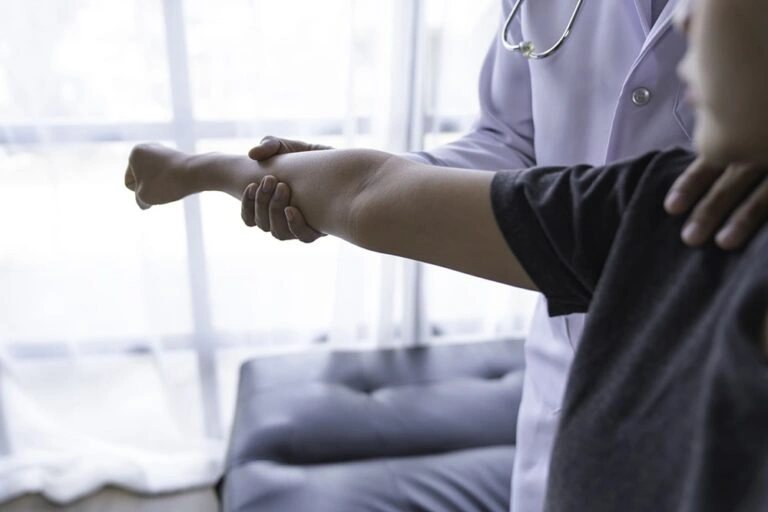Fishing is big business here in Alaska. Stories make it down to the lower 48 about how getting a job in the Alaskan fishing industry could net you a lot of money in a short period. But what these stories don’t tell you is how physically demanding these jobs are. And the injuries they can cause.
At Better Health, we often treat fishermen for injuries or chronic pain conditions they acquire during the fishing season. But you may be surprised at the most prevalent injuries we get. Many people would assume the back, but back pain isn’t as prevalent as upper extremity disorders. Namely, shoulder pain in the form of rotator cuff injuries.
And you may be equally surprised that chiropractic care is ideally suited to help with shoulder pain.
Alaska Fishermen and Rotator Cuff Injuries
The shoulder is a very flexible joint. Unfortunately, it’s hard for a joint to be flexible and stable at the same time. This is why it’s pretty easy to injure your shoulder. Most often, this is in the form of a rotator cuff injury.
To give you an idea, the average percentage of the population that suffers from a rotator cuff injury is between 8% and 14%. But a study of Alaska fishermen published in 2018 found that nearly 40% of participants had rotator cuff problems!
Many people assume that they’ll need surgery to fix the issue, but this isn’t true. Surgery should be a last resort for rotator cuff problems. For most people, chiropractic care and physical therapy can help relieve shoulder pain and prevent it in the future.
Symptoms of a Rotator Cuff Injury
Most rotator cuff problems are the result of overuse. If you need to raise your hands over your head repeatedly for hours a day, it can result in inflammation and irritation of the shoulder joint. This can cause some unpleasant symptoms, such as:
- Weakness – Especially when raising the arm up.
- Pain – Usually a persistent ache at the back of your shoulder.
- Reduced range of motion – Making everyday activities difficult.
- Trouble sleeping – Shoulder pain often disrupts sleep cycles.
Shoulder Pain Can Interfere with Work
For fishermen, the problems above can often culminate in lost work time. Some people tend to just power through and deal with the pain in the off season. But this is a dangerous route, as it could make the problems worse.
During the study of Alaska fishermen, 76% of participants reported that their upper extremity injury interfered with their work. And it’s not just the fishing season that they need to worry about. Most Alaska fishermen have physically demanding jobs in the off-season, too. So if nothing is done about the problem, it won’t go away.
That’s where chiropractic care comes in.

Chiropractic Care for Shoulder Pain
Chiropractors always start any treatment plan with a thorough exam. The shoulder is a complex joint, and a rotator cuff injury could be confused with something else. So it’s important to make sure the underlying cause gets the proper treatment.
Once the chiropractor determines the cause of your shoulder pain, he or she will develop a treatment plan. The first order of business is usually to relieve the pain. Once the pain is under control, the chiropractor will address the underlying issue.
This is often done in a number of different ways:
- Adjustments – The shoulder and neck work in tandem, so it’s common to receive adjustments.
- Chiropractic Massage – This type of massage pinpoints muscles, tendons, and ligaments in the shoulder to relieve pain and tension.
- Ultrasound and Cold Laser Therapy – Used to reduce inflammation and relieve pain.
Curing and Preventing the Pain
But chiropractic care isn’t just about dealing with the problem now. It’s also about thinking in the long-term about your health and well-being. This is where chiropractors really excel.
You’ll receive exercises, tips, and tactics to help prevent rotator cuff and other shoulder injuries in the future. The chiropractor will work with a physical therapist to teach you the exercises you can do to strengthen your shoulder.
They can also help you understand the mechanics of the shoulder joint, and how best to use the joint to avoid injury. This will likely include tips on maintaining proper posture and how you can lift your arms above your head without compromising the shoulder joint.
The goal is to prevent further issues, which in turn will prevent things like arthritis, tendonitis, and bursitis.
Conclusion
Fishing is one of many demanding jobs that Alaskans do. And since we’re self-reliant people, it’s not often easy for us to seek help. We prefer the “wait-and-see” approach, thinking that the pain will go away, eventually. But there’s a real danger of developing chronic issues when you don’t address things like rotator cuff injuries. So seeing a chiropractor can not only help relieve your pain, but it can also help to prevent further injury through stretching, strengthening, exercise, and proper body mechanics.
Chiropractic care is natural, non-invasive, and safe. Whether you’re having problems with your back, your shoulder, or you’re experiencing joint pain all over, we can help.
https://alaskaseagrant.org/2018/06/14/study-alaska-fishermen-suffer-high-rate-of-health-problems/
https://alaskaseagrant.org/wp-content/uploads/2018/06/RP-18-03-Eckert-C-Baker.pdf









